Back in 2019, Al bought me a packet of skirret seeds off the internet, and because I am not a confident gardener, the wonderful Freya germinated them and gave me back young plants. I planted these out round the garden, where they did OK and I gathered seeds and in the spring of 2020, germinated and planted out some more skirrets.
These plants are perennial and it was clear from the first-generation plants that I moved, that the roots take a while to develop. So I waited until now, November of 2020, to dig up one of 2019’s seedlings and try cooking the roots.
As I’d hoped, the plant was easily separated into three, and I replanted one section. However the roots were not that big.
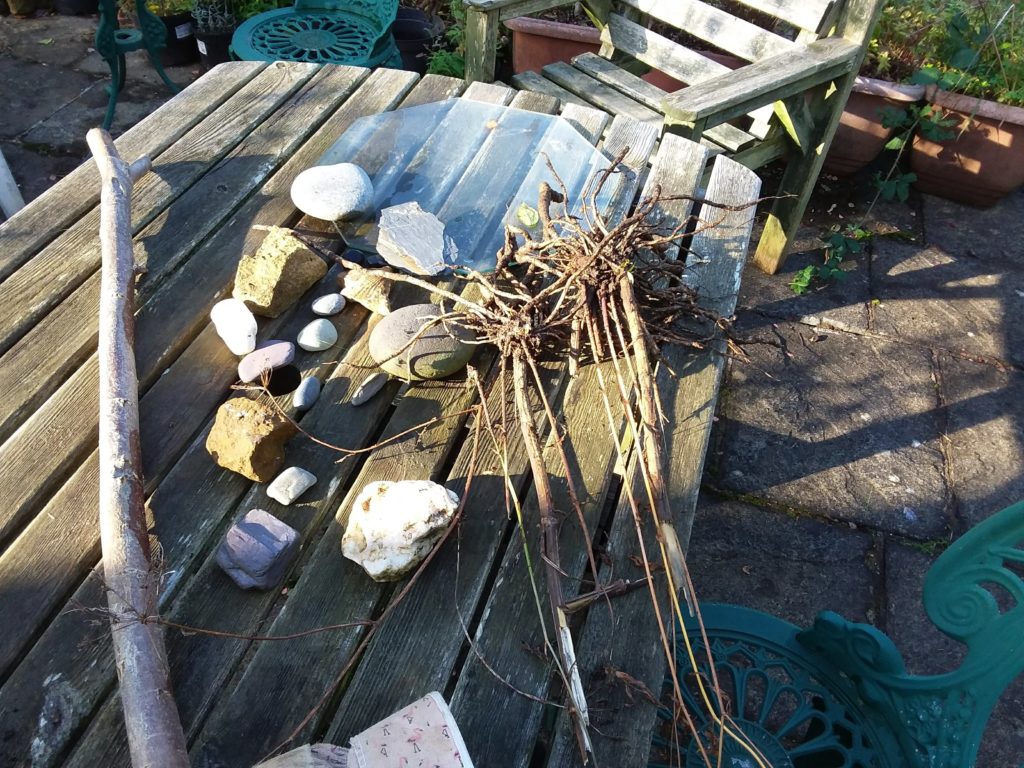
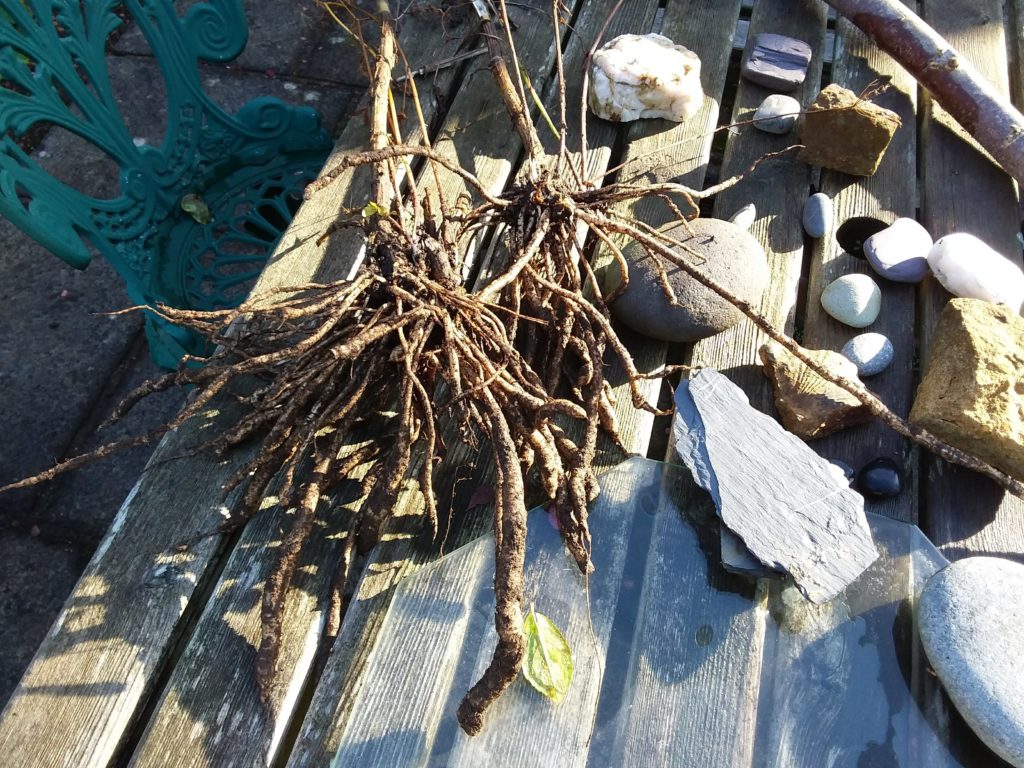
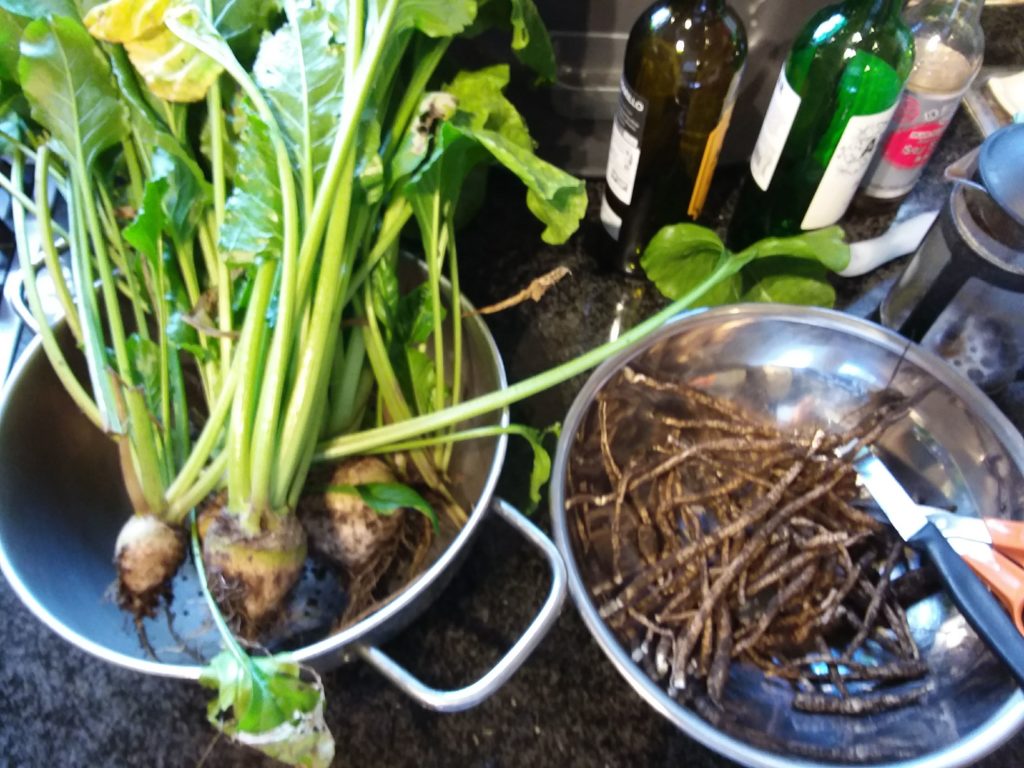
I cut off the larger roots and washed them, then scrubbed them with an old toothbrsh. The soil came away fairly easily but it wasn’t a quick job, with so many little roots.
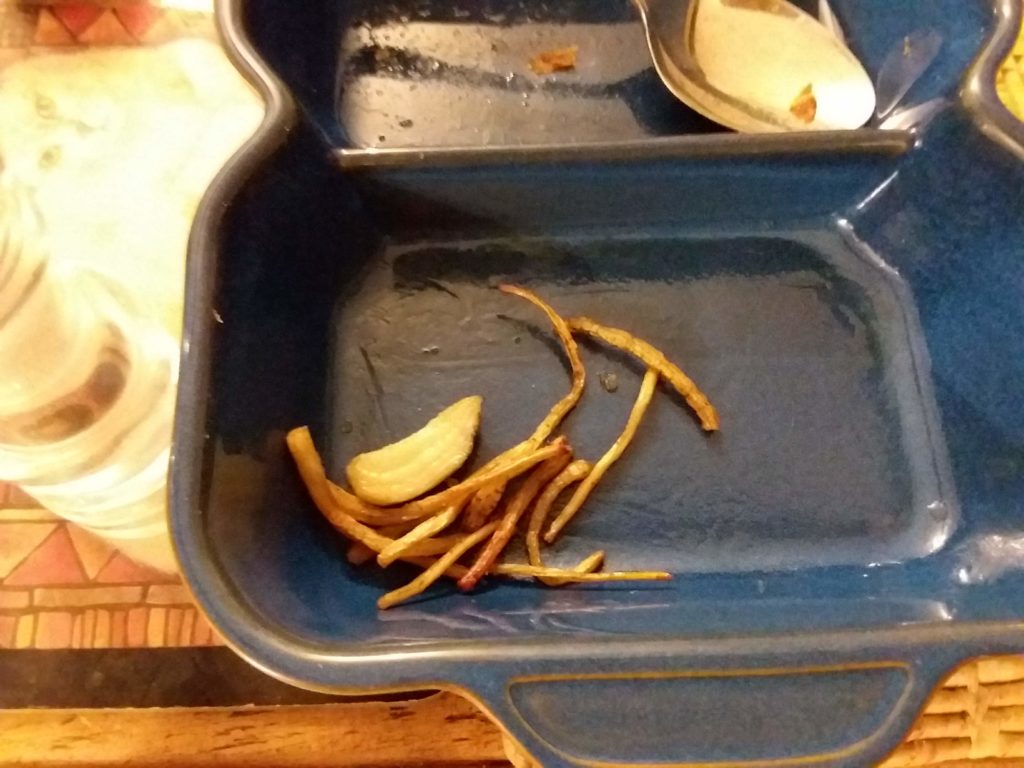
I roasted the beetroot and skirret in beef dripping, putting the beetroot chunks in first so they got half an hour or so, and the skirrets 10 – 15 minutes. The skirrets became very soft when cooked, and the texture was creamy and very pleasant, apart from the sinewy cores of the narrower roots. It’s pretty easy to eat the soft outer and leave the core.
The larger roots were soft all the way through. The flavour is indeed somewhat like parsnip but more peppery.
Our guest found a use for the cores – they can be used to floss your teeth!
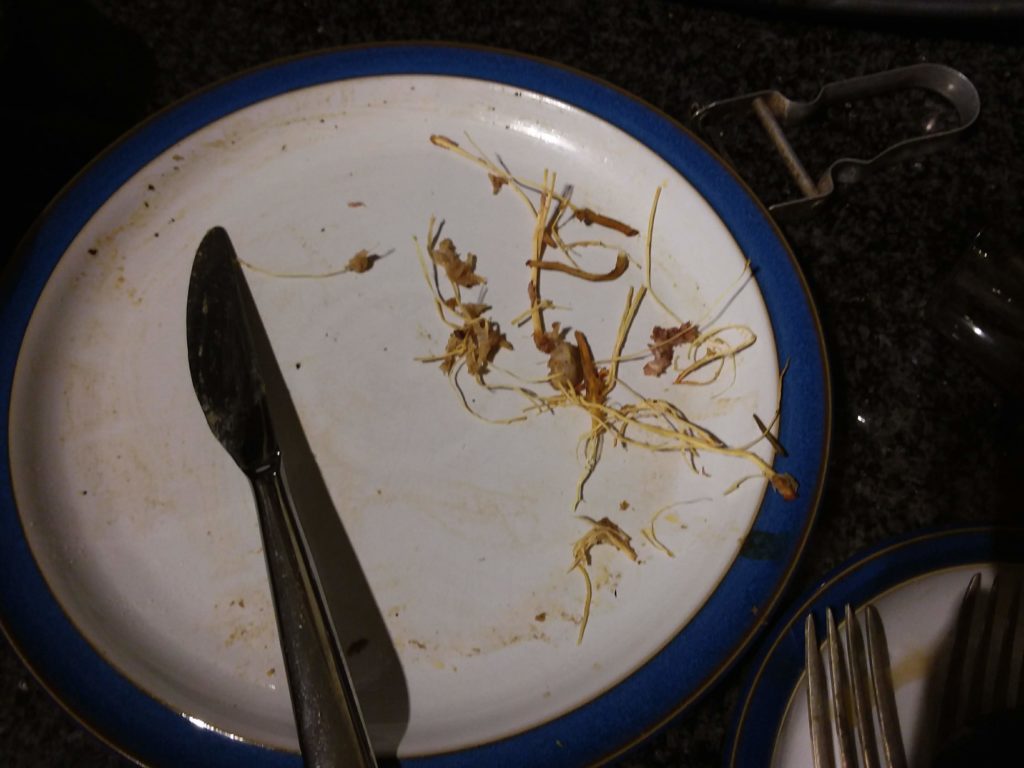
Overall I’d say skirret is a success, but you’d need much bigger plants to make a meal – I served these as a side dish. I hope that by next year, or the year after, the older plants will be more productive. A skirret bed clearly takes several years to establish.